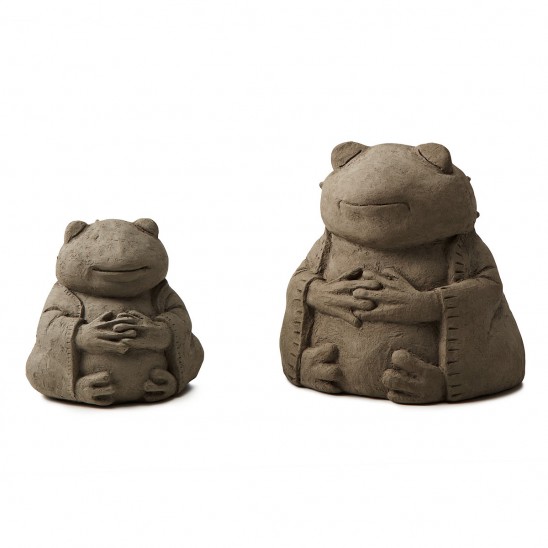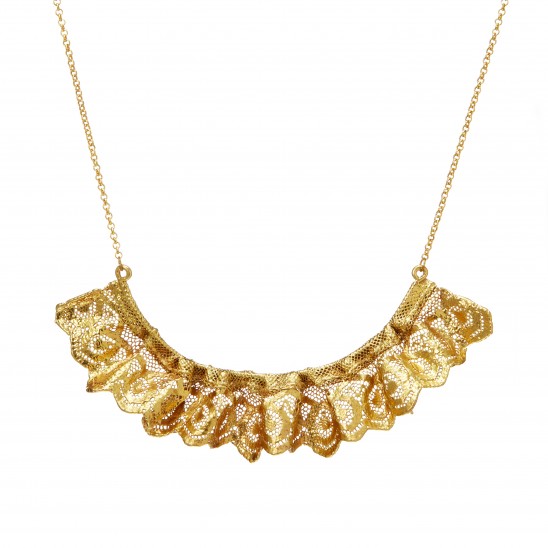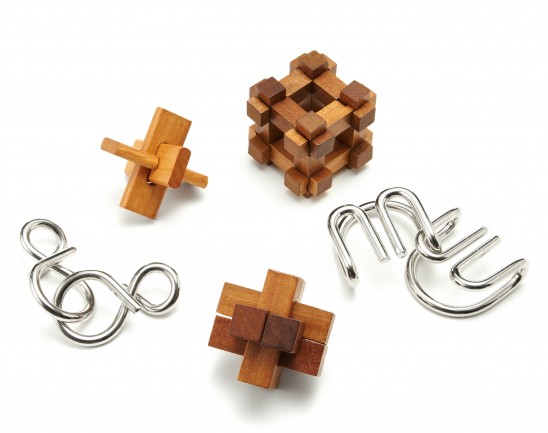In the 7th century A.D., Æthelthryth—better known by her Anglicized name, Audrey—was a daughter of East Anglian (present-day England) royalty who, despite becoming a queen, was primarily interested in a life of spiritual devotion. She even became a nun and founded her own abbey before eventually passing away and being canonized as a saint. Legend has it, however, that one folly that lingered from St. Audrey’s highborn youth was a love of necklaces. And so the locals began to commemorate her by producing fine, lace necklaces. Fast forward to the 17th century, when three significant changes had occurred: The lace necklaces had grown to become low-quality goods sold to those on pilgrimage. The Puritans had ascended to power, and were busy looking down their noses at anything that smacked of prideful frippery. And the name of St. Audrey’s Lace had gradually been shortened to Tawdry Lace. Thus, the word “tawdry” came to mean anything cheap and vulgar.
NOPE! And it never will be, as long as it’s sealed and stored in a dry place! That’s because honey is a sugar. All sugars are hygroscopic, meaning they don’t contain much water in their natural state. Very few bacteria or microorganisms can survive in an environment like that. One thing that sets honey apart from other sugars, and makes it an excellent long-term resident in your cupboard, is its high acidity, which kills off anything trying to make a home in the honey. The oldest honey that has been found dates back 5,000 years. Whether that particular sample is edible depends on its storage. However, if you were to seal up your favorite honey, tuck it away in a safe, dry place, your great great great, several more times great grandchildren could partake.
Manhattan Rooftop Honey Flight, $45
If you want to know about genius, might as well consult a bona fide genius like Alexander D. Wissner-Gross, Ph.D. His recent research asserts that, mystical as it may sound, the highest form of intelligence is the ability to predict the future—or at least possible futures. That is, intelligence acts to maximize future freedom of action. For those of us who aren’t card-carrying Mensa members, that means that it’s really smart to keep your options open—as many as possible, for as long as possible. By studying both biological intelligence (animal behavior) and artificial intelligence (computers), Wissner-Gross has found that the ability to predict and pursue probable futures (think chess master strategy) is beneficial to a being’s success in navigating the challenges posed by its environment.
To test these theories, Wissner-Gross developed an A.I. called Entropica, “sapient software” which learns to negotiate its environment without even being told what to do. But before you panic over an impending robot takeover, note that Wissner-Gross also posits that the accumulation of intelligence follows the process of taking control of an environment, not vice versa. In other words, Matrix-like dystopias notwithstanding, computers won’t become über-intelligent and then plot to take over the world. No, they’re becoming über-intelligent as they take over the world, helping their human architects thrive in the process. So take comfort in Wissner-Gross’ prediction—it’s the smart thing to do.
If a koala did break into your house, vandalize your car, or commit any other array of felonies, the detectives would have a tough time figuring out whodunit—or, more specifically, which species-dunit. Turns out, we share fingerprint patterns with the adorably moody creatures. The prints are so identical that even a trained expert would have trouble telling the human and koala prints apart, even with a microscope. Koalas are in fact in the only marsupials to have these kinds of prints, a possible evolutionary advantage to aid in climbing. So what’s the real takeaway from this? Never rule out a highly advanced koala with a vendetta when investigating a crime scene.
 Both, because science! There are five known species of freeze-tolerant frogs in North America. Once winter hits, if the cold-blooded creatures can’t dig down enough into the soil to avoid the ice, they simply freeze over. Once the ice hits the skin, sugar is released from the liver and carried through the bloodstream to keep cells from dehydrating and shrinking. Eventually the heart stops and all other organs stop functioning. The frog doesn’t use oxygen and it appears dead. But then! The frogcicle melts and begins to thaw out, replacing damaged cells. He’s free to hop another day! The next time you’re trudging through knee-deep snow, feel free to be jealous of this hibernation tactic.
Both, because science! There are five known species of freeze-tolerant frogs in North America. Once winter hits, if the cold-blooded creatures can’t dig down enough into the soil to avoid the ice, they simply freeze over. Once the ice hits the skin, sugar is released from the liver and carried through the bloodstream to keep cells from dehydrating and shrinking. Eventually the heart stops and all other organs stop functioning. The frog doesn’t use oxygen and it appears dead. But then! The frogcicle melts and begins to thaw out, replacing damaged cells. He’s free to hop another day! The next time you’re trudging through knee-deep snow, feel free to be jealous of this hibernation tactic.
You’d never guess and answer. First, because the answer is the tuatara, an animal you probably haven’t heard of unless you’re from New Zealand. And second, because its record-setting evolutionary rate is disguised by the fact that its appearance hasn’t changed much in millions of years. The tuatara resembles a lizard, except that it has features that are more closely related to fish and birds, as well as some truly unique attributes, such as a light-sensing third eye. These creatures are the last living members of an order of animals that thrived during the Mesozoic period (as in, the age of dinosaurs), and they actually predate the appearance of lizards and snakes. But while fossils reveal that the tuatara looks essentially the same now as it did then, DNA extracted from those fossils compared to DNA from living specimens reveals a faster rate of change than is found in any other animal. Sadly, climate change is having an adverse effect on the tuatara: their gender is determined by the incubating temperature of each egg, and as their habitat grows warmer, fewer and fewer females are being born. While they may be the fastest evolving species on earth, evolution itself is such a slow process that it won’t be able to outpace this problem.
Yes. It’s not only possible, but we have actual time travelers walking among us today. According to the Theory of Relativity, it is possible for speed or gravity to make time pass differently for separate observers. If that sounds vague and science-y, maybe a real-world example will help: if highly accurate, atomic clocks are aligned perfectly on earth, and one of those is sent into space, then one of those clocks will run faster than the other one. This is not caused by a mechanical problem with the clock, but happens through time itself being bent by the forces involved in space travel. So, all of those astronauts hanging out on the space station? Their time is passing faster than ours, and when they return to earth, they are actually younger than they would be if they had remained here. Ok, so not much younger, but it’s still true. Michael Finke and Peggy Whitson, who have spent more time on the space station than any other American man and woman, are 0.0093 and 0.0092 seconds younger, to be exact. And the man who has spent more time on the space station than anyone in history—Russia’s Sergei Krikalev, with 803 days in orbit—is a full 0.02 seconds younger! Maybe one day we will be able to reverse the time dilation, and these explorers can tell us about the wonders of life half a second in the future!
Uncommon Knowledge: What do German weddings have in common with ghosts?
December 20, 2014A Polterabend, of course! Traditionally, German nuptials are preceded by an all-night fest that invites guests to smash dishes, tiles, pottery, even toilets—anything ceramic or porcelain. It’s not just a bunch of Germans getting really betrunken and breaking their ceramic steins accidentally. Nein. It’s a deliberate campaign to produce a mess of ceramic shards which, in the end, the lucky bride and groom-to-be have to clean up. This wantonly medieval destruction of dishware may symbolize a precious occasion that cannot be repeated (just as you can’t really reassemble a cup that’s smashed to smithereens). And the happy couple’s janitorial duty is meant to symbolize working together through future adversity—“picking up the pieces” when things get messy. But what does this oddly endearing ritual have to do with the supernatural? In a word: words! Polterabend is a combo of the German verb poltern (to make a racket) and Abend (evening). Essentially, it means “an evening of disruptive pottery smashing.” Seriously, in Germany you might receive an invitation that’s something like “Gerhard and Eva cordially invite you for an evening of symbolic china destruction. Regrets only.” But if the new Herr and Frau are unlucky enough to find a poltergeist (disruptive + ghost) in their new home, they could be in for another, more frightening round of dishware disruption. As if an all-night session of destroying brain cells, dodging sharp, flying shards of porcelain, and a big clean-up at the end weren’t intimidating enough…







